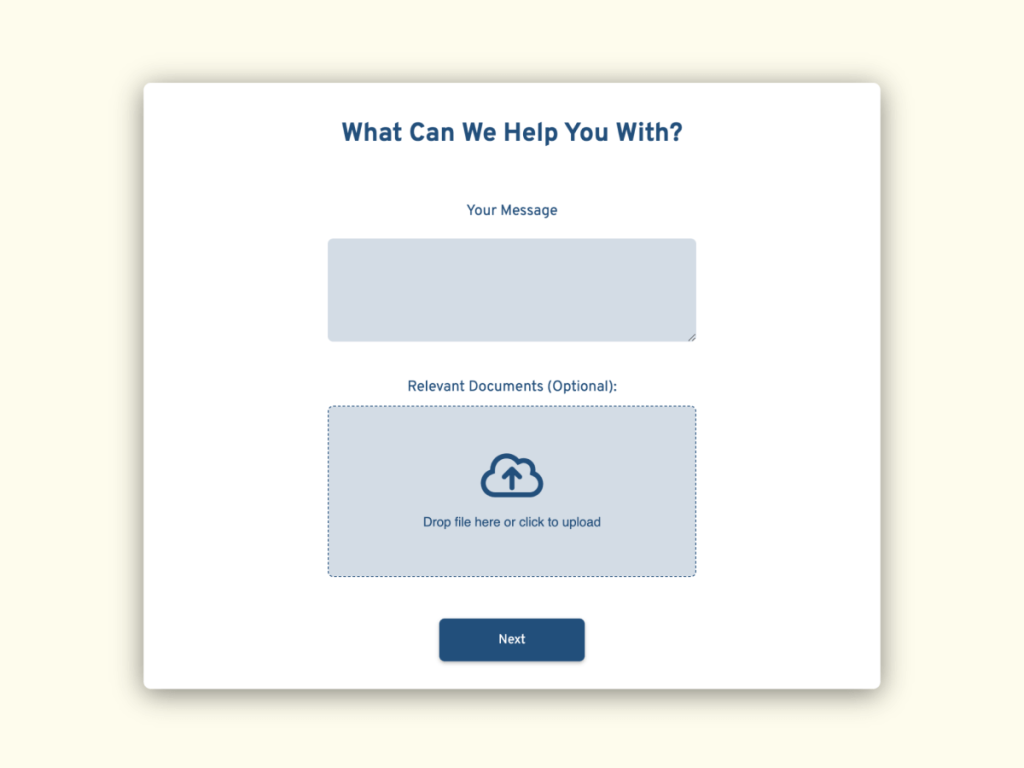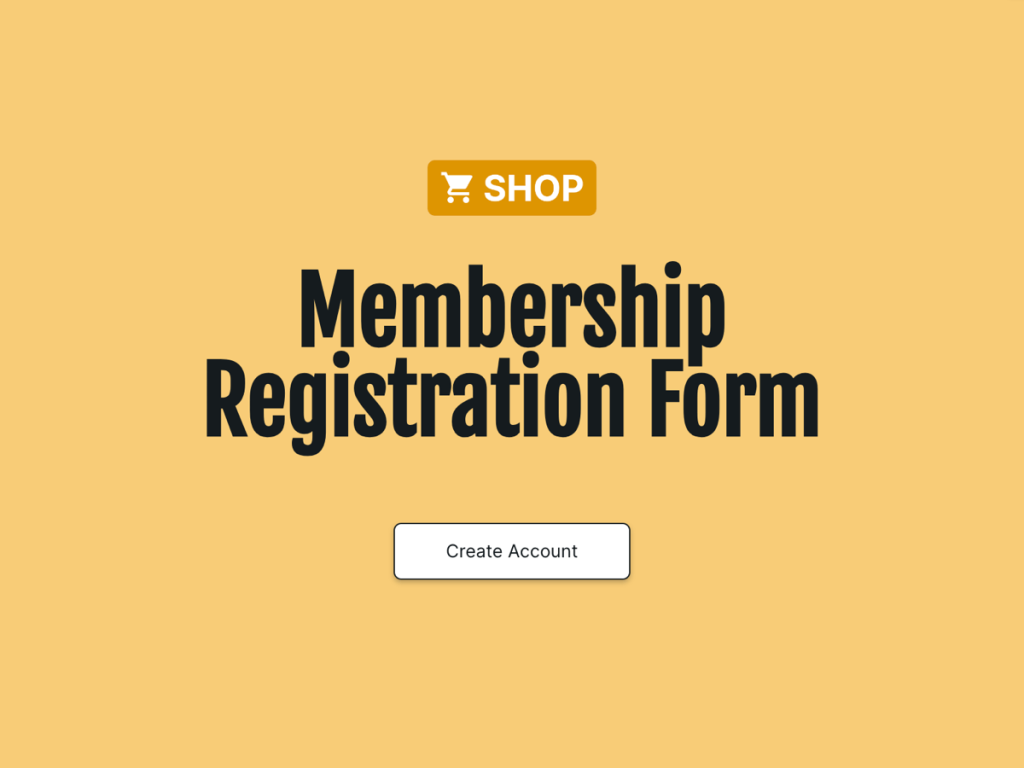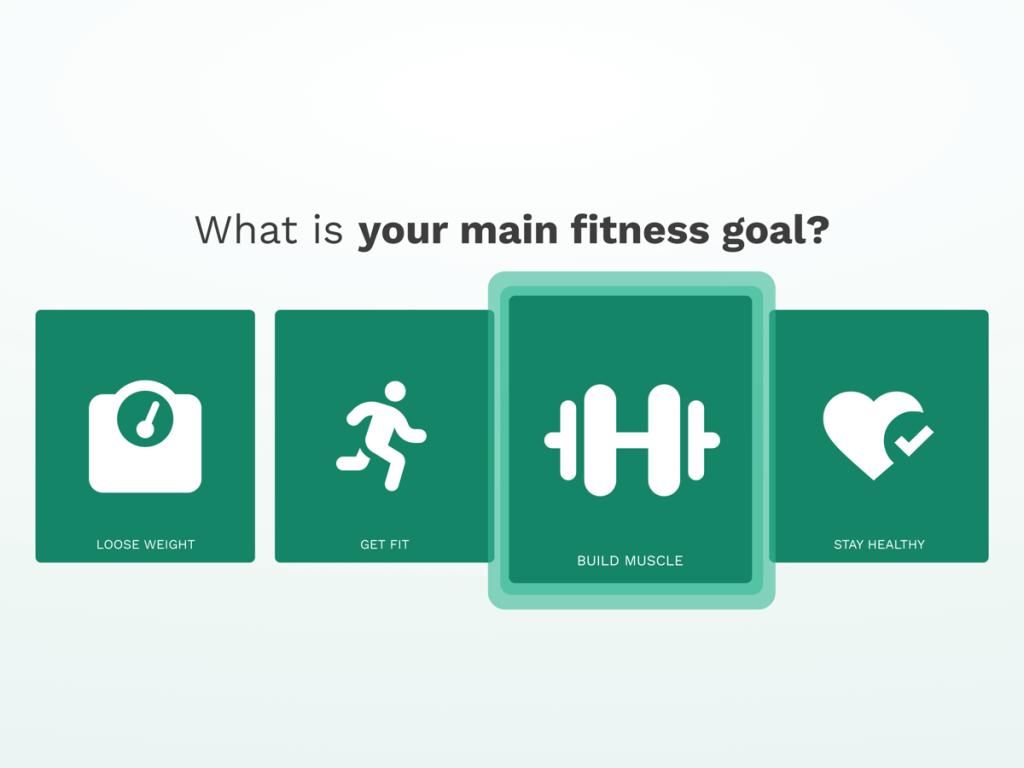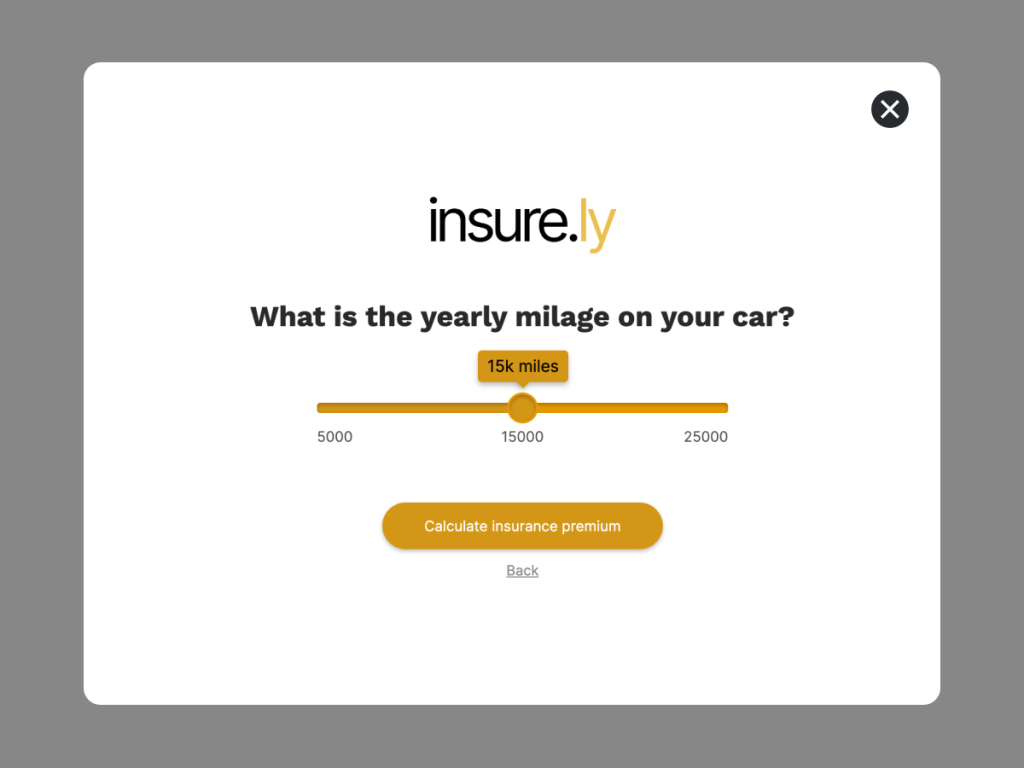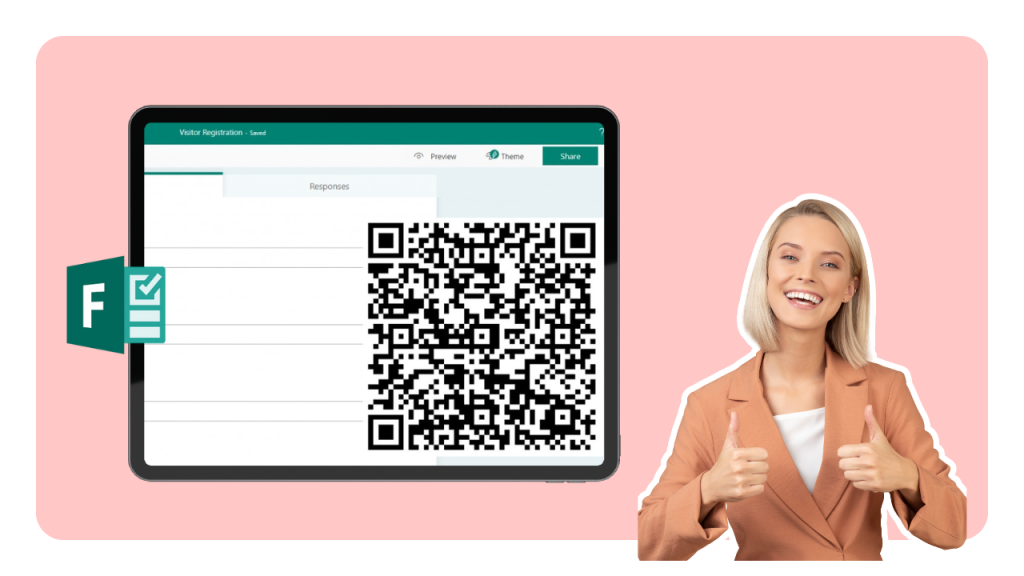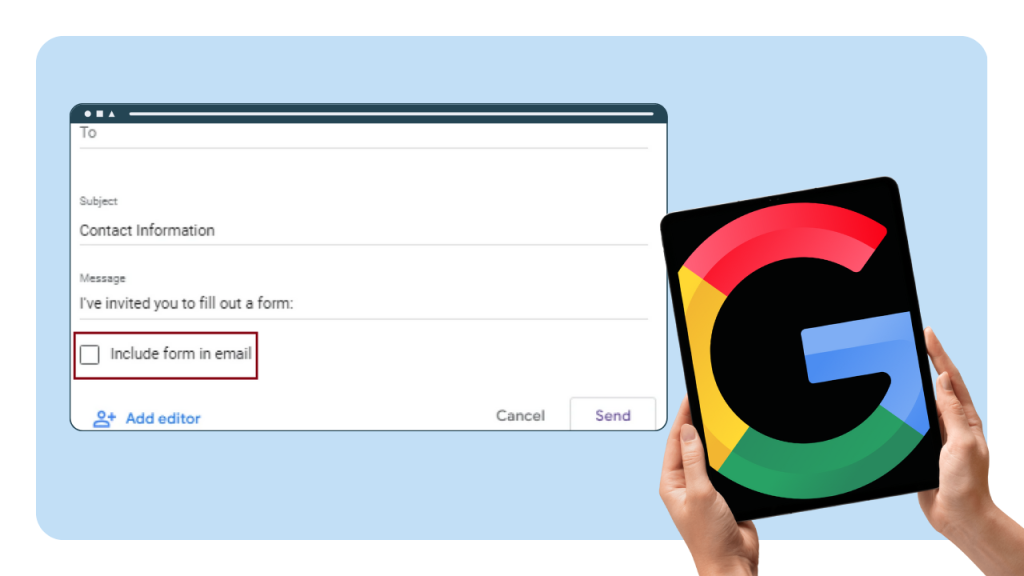What do you think of our brand?
It’s the right question to ask the target audience regularly.
Creating a brand perception survey is essential for understanding how your audience views your brand. This feedback is invaluable for enhancing your brand's image, refining products and services, and crafting more effective marketing strategies.
Here’s a step-by-step guide to creating an effective brand perception survey without code (fellow marketers, we’re with you!)
Why Your Team Should Run Brand Survey
Brand perception surveys help identify strengths and weaknesses, measure brand awareness, and gauge customer loyalty. Sometimes surveys can also offer insights into competitors' successful strategies.
Survey frequency depends on the company's needs and market dynamics. Many businesses conduct annual surveys. Dynamic industries might choose quarterly surveys for timely insights. Surveys can also be run post-campaign or significant events to measure immediate impacts. For continuous improvement, some companies integrate ongoing feedback mechanisms into their customer interactions.
Here’s an example of such a survey:
It’s a customizable template. Get it here.
💡 Check out this case study to learn how our involve.me collects regular customer feedback.
Now let’s learn how to create a brand survey without code, distribute it and analyze the results with ease.
Generate Your Brand Survey On the Spot
involve.me offers an AI-powered survey maker that simplifies the survey design process. Here’s how it works:
1. Write a prompt: Describe your survey needs, like "Create a brand perception survey for a tech company."
2. Choose a design: The AI will generate a few designs based on your prompt. Select the one that fits your brand.
3. Customize: Register for a free account on involve.me. You can edit anything in the survey, from questions to design elements.
4. Get embed code: Once satisfied, publish your project in the involve.me’s editor and get an embed code to integrate the survey into your website.
Generate branded survey without registration:
Create your survey with AI
Just paste your URL & click generate
Tips on Structuring a Brand Perception Survey
Creating an effective brand perception survey requires careful planning and thoughtful question design. Here are some best tips to ensure you get the most useful insights:
1. Avoid Biased Questions
Biased questions can lead to misleading responses, which can distort your survey results. Ensure your questions are neutral and do not lead respondents towards a particular answer.
Here’s an example of such a biased question: "How much do you love our exceptional customer service?"
And here's a revised neutral question your team should be asking: "How would you rate our customer service?"
2. Use Clear and Concise Language
Ensure your questions are easy to understand. Avoid jargon, technical terms, and complex language. Clear and concise questions reduce the risk of misunderstandings and ensure more accurate responses.
For example, instead of "On a scale from 1 to 10, how do you perceive the efficacy of our product in terms of performance?" use "On a scale from 1 to 10, how well does our product perform?"
3. Incorporate Conditional Logic
Conditional logic allows respondents to skip certain questions based on their previous answers. This makes the survey more relevant to each respondent and reduces survey fatigue.
Here’s a simple example of the conditional logic:
"If a respondent answers 'No' to 'Have you purchased from us before?', they can skip questions about their purchase experience."
4. Balance Question Types
Use a mix of question types to gather comprehensive data. Include multiple-choice, rating scales, and open-ended questions. Each type provides different insights and keeps the survey engaging.
Example:
- Multiple choice: "Which of the following brands do you recognize?"
- Rating scale: "On a scale of 1-10, how likely are you to recommend our brand?"
- Open-ended: "What do you like most about our brand?"
5. Group Related Questions Together
Organize questions into sections based on themes. This logical flow makes the survey easier to follow and ensures respondents don’t feel overwhelmed.
For example, you can group questions on brand awareness, brand perception, customer experience, and demographic information in separate sections.
6. Pilot Test Your Survey
Before launching, test your survey with a small group. Gather feedback on question clarity, survey length, and overall experience. Make adjustments based on their feedback.
Tip: Include a mix of internal team members and a few customers for testing.
7. Offer Incentives for Completion
Encourage participation by offering incentives such as discounts, free trials, or entry into a prize draw. This can boost response rates and ensure a diverse set of responses. Mention the incentive clearly at the beginning of the survey and again upon completion.
Distribute Your Survey
Choose the right channels to reach your audience. Options include:
- Email: Send the survey to your customer list.
- Social media: Share the survey link on your profiles.
- Website: Embed the survey on your homepage or a dedicated survey page.
To embed a survey created with involve.me, navigate to the "Share & Embed" section where you'll find various sharing options. Sending surveys via email is an effective method, allowing your target audience to access the survey at their convenience.
To send emails directly from involve.me:
Click "Compose Email" to open the email builder.
Add recipients, write a subject line, and craft your email message.
If you prefer using your own email marketing tool:
Compose an email in your email marketing platform.
Add the survey link copied from the involve.me dashboard.
When sending your survey via email, ensure your call-to-action is clear and concise, urging recipients to click the survey link and complete it.
Timing is important; send the survey when your customers are most likely to respond, such as after a purchase or a positive interaction with your business.
Tip: Increase engagement by adding a coupon code element to the last page of your survey. involve.me allows you to generate unique codes for each participant and send them via automated email.
To set up automated emails after survey completion:
Navigate to "Configure".
Go to "Email notifications".
Select "Send custom email to participants".
Analyze the Survey Results
Once you’ve collected enough responses, analyze the data. Look for patterns and insights that align with your objectives.
Key metrics to keep in mind include:
- Net Promoter Score (NPS): Measures customer loyalty.
- Brand Awareness: Percentage of respondents recognizing your brand.
- Perception Scores: Average ratings on how your brand is viewed.
When conducting surveys with involve.me, you can dive deep into responses and extract valuable insights through advanced analytics features.
The involve.me survey platform automatically processes responses, delivering comprehensive custom reports in PDF format, filled with key insights. These core reporting features save your team significant time and assist in making informed decisions.
The report includes metrics such as views per month and responses per survey, along with customer sentiment analysis, which is essential for evaluating numerous open-ended responses.
Also, it offers a list of recommendations derived from critical insights.
Here's an example of the survey report you can generate with involve.me in just 2 minutes, no matter the number of responses received:
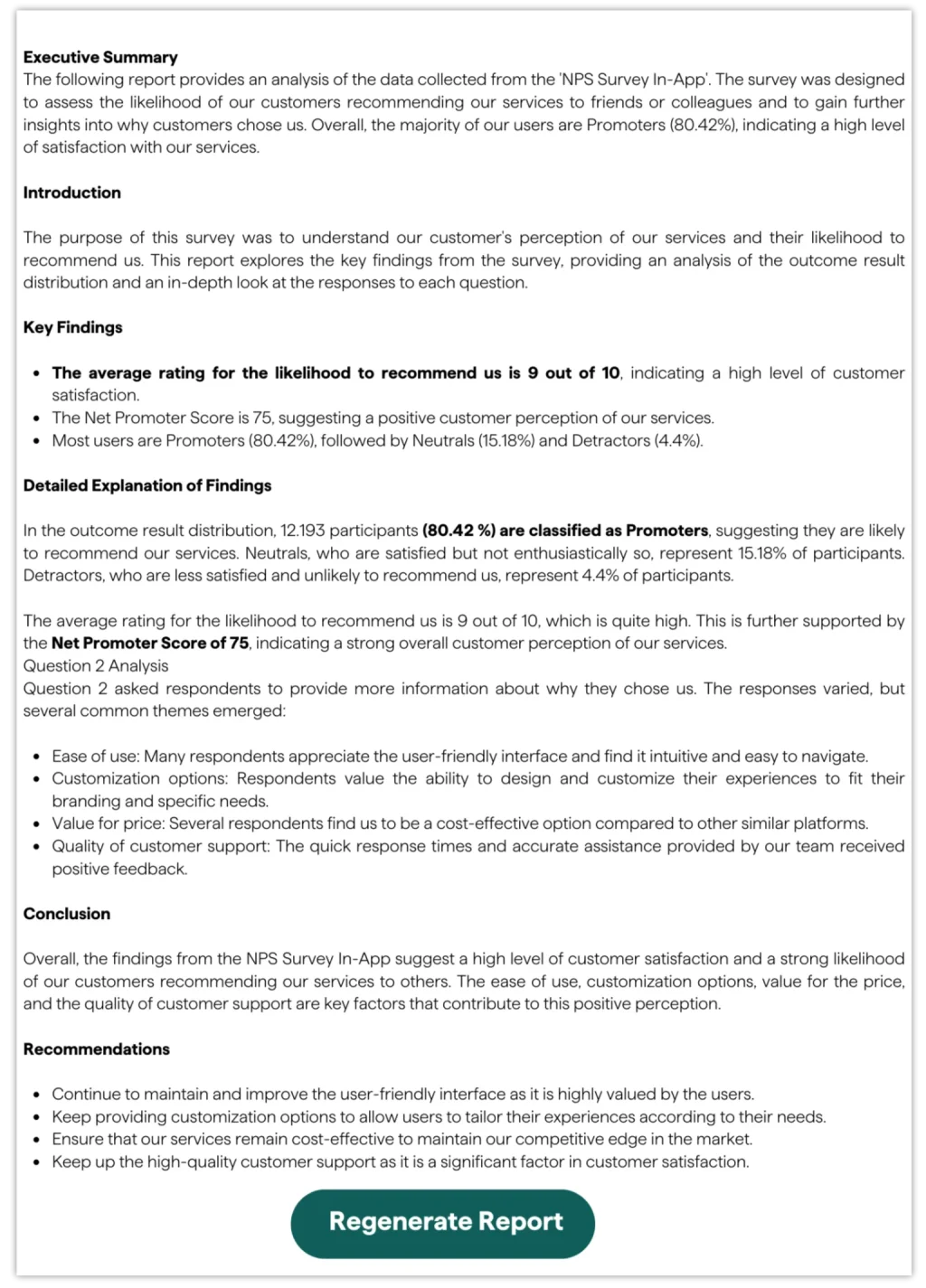
Final Words + Survey Templates
Creating a brand perception survey is a strategic way to gather valuable insights about your brand. By following these steps and using tools like involve.me’s AI-powered survey maker, you can craft a survey that not only collects data but also provides actionable feedback for enhancing your brand’s image and offerings.
If you’d like to get more customer feedback, customize one of the pre-designed customer surveys and start collecting feedback right away:

